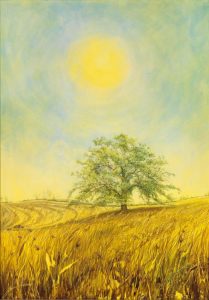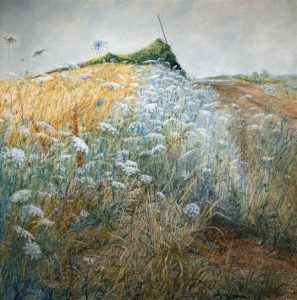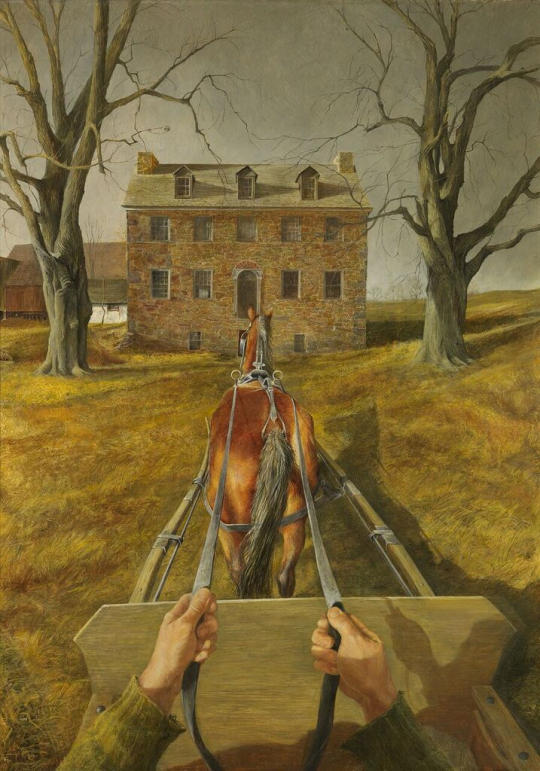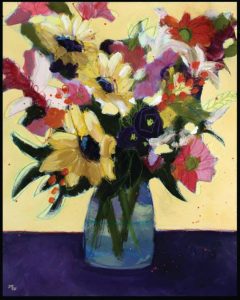Riding the crest of last summer’s visitor tsunami that was Andrew Wyeth: In Retrospect, perennial favorite A Brandywine Christmas, the Brandywine River Museum of Art is poised for the next wave of visitors with The Way Back: The Paintings of George A. Weymouth, which opens on January 27.

Sixty-five works in the exhibition demonstrate the breadth of the artist’s mastery in many mediums—from the loose energetic style and monochromatic palette of his early oils made in the 1950s to the luminous, highly detailed temperas of his later career.
Guest curator Joseph J. Rishel, Curator Emeritus of the Philadelphia Museum of Art and a friend of the artist, Museum Director Thomas Padon and Virginia O’Hara (then Curator of Collections & Curator of Cultural Affairs) pored over works and photographs of paintings in galleries and private collections in the United States and Great Britain. Padon says that actually seeing the breadth of Weymouth’s work was “overwhelming” and “exhilarating.” Rishel says, “We all had our favorites, and there were so many we wanted to include, but we had to cut back.” The trio eventually narrowed their selections down to examples of Weymouth’s finest landscapes, portrait heads, and full-figure portraits in oil, tempera and watercolor.

Weymouth, who reflected that, “there never was a time when I was not drawing or painting,” was encouraged to paint by his mother, Dulcinea, an artist herself who had trained at the Art Students League in New York. She took him to museums and bought him art books. Weymouth also once mused, “I don’t think you can choose to paint; you paint because you have to.”
Living in the Brandywine Valley, he learned by knowing and observing the area’s artists. From Howard Pyle paintings, he learned that an artist must have a deep connection with his subject. From Andrew Wyeth, his mentor and lifelong friend, he learned to appreciate the scenery and people of the region. This heightened awareness of the people, places, and animals he loved contributed to some of Weymouth’s most successful portraits and landscapes.
Rishel believes Weymouth was able to convince British royalty and world famous figures like Luciano Pavarotti to sit for him because, “the subjects respected him and responded to the enthusiasm he had for his work.”
The exhibition catalogue, co-published by the museum and major art publisher Rizzoli/Skira is a work of art itself. Padon emphasizes the significance of having a topnotch catalogue for the exhibition. “It is very meaningful for me to do this project at this level. I think Frolic and his artistic career deserve it,” says Padon. Joe Rishel and Annette Blaugrund, former Director of the National Academy of Design, who specializes in American art, contributed major essays.

Gift of George A. Weymouth and McCoy duPont Weymouth in honor of Mr. and Mrs. George T. Weymouth, 2017. © George A. Weymouth
Blaugrund will present a lecture in conjunction with the exhibition entitled “George A. ‘Frolic’ Weymouth: Artist and Visionary” on Thursday, March 15 at 6 p.m.
Weymouth, who died April 24, 2016, at the age of 79, was a visionary conservationist and philanthropist. In 1967, he and two friends purchased two parcels of land in Chadds Ford, totaling 47 acres, saving them from industrial development. Weymouth put aside his successful art career for a few years to shepherd the development and expansion of the Brandywine Conservancy & Museum of Art. Putting his “money where his mouth was,” in 1969, he eased his Big Bend estate to the Conservancy—its first conservation easement. Weymouth was also an accomplished equestrian and expert carriage driver. He enjoyed global reputations in all these areas in addition to his renown as an artist.
“Frolic” loved life. His obituary in the April 26, 2016, New York Times stated that, “his childhood nickname perfectly embodied the joy with which he lived his life and his irrepressible sense of humor.” Weymouth’s awareness and appreciation of these elements are discernable in each of the paintings presented in The Way Back: The Paintings of George A. Weymouth. The exhibition continues through June 3, 2018.
About Lora B. Englehart
Lora has a passion for art, gardening, yoga, music and dancing. She continues to research the life of locally born abolitionist and 1998 National Women's Hall of Fame inductee Mary Ann Shadd Cary. She is a dedicated community volunteer, working with the American Association of University Women, Wilmington, DE branch (programs chair), Chadds Ford Historical Society (former board member) and Brandywine Conservancy & Museum of Art. Lora lives in Birmingham Township with her husband Bill and son Brad. Daughter Erika lives in Pittsburgh with husband Bob and baby Wilhelmina. She is a former French, Spanish and ESL teacher, bilingual life insurance underwriter and public relations coordinator for Delaware Art Museum and Brandywine Conservancy & Museum of Art.





Comments